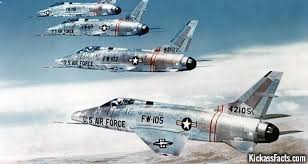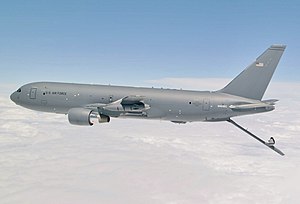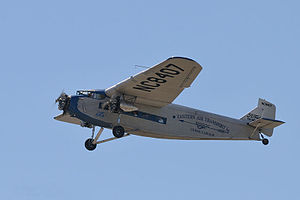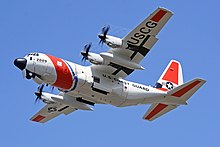EA-18G Growler: $102 million

The EA-18G Growler is an improvement over the Super Hornet aircraft. It includes all the Super Hornet’s capabilities but is lightly armed and not equipped for aggressive air excursions. The Growler hosts radar jamming equipment that interferes with enemy radar devices and disrupts their communications. This capability is provided by Northrop Grumman. This aircraft was added to the US Navy in 2009. Australia inducted 12 Growlers into its air force in 2017.
V-22 Osprey: $118 million

The highlight of the Osprey is its tiltrotor technology that enables it to function as both a plane and a helicopter. This innovation enables the aircraft to take off and land like a helicopter while having the range and speed of an airplane. The advantages are the time needed to fly is minimized and you don’t need a landing strip. However, US Vice President Dick Cheney stopped production of the Osprey after an accident involving the aircraft killed 30 people. But, because of its versatility, the plane continues to be used today. It received rave reviews when it was pressed into medevac and transportation operations in Afghanistan, Iraq, Kuwait, and Libya.
The Osprey has both short takeoff and landing (STOL) and vertical takeoff and landing (VTOL) capabilities. This aircraft’s production program began in 1981 and testing started in 1989. Many years of development were needed to get right the tiltrotor innovation. The US Marine Corps included the Osprey in 2007 and the US Air Force in 2009.
Future military aircraft of the United States is a list of military aircraft that are being developed for use by the United States military in the near future. For aircraft in-service see List of active United States military aircraft.
| Aircraft | Type | Operators | Notes |
|---|---|---|---|
| Fixed-wing Aircraft | |||
| Boeing KC-46 Pegasus | Aerial Tanker | Air Force | To enter service in 2018. |
| Boeing T-X | Trainer | Air Force | To enter service around 2023. |
| Northrop Grumman B-21 Raider | Stealth strategic bomber | Air Force | To enter service in 2025. |
| Lockheed SR-72 | Hypersonic ISR and Strike | Air Force | Proposed, could enter service in 2030. |
| F/A-XX Program | Multirole combat aircraft | Navy | To enter service around 2030. |
| Aerial Reconfigurable Embedded System | VTOL Payload-carrying Craft | ||
| Helicopters | |||
| Future Vertical Lift | Multirole Helicopter | Army | Version to enter service between 2025-2035. |
| Sikorsky CH-53K King Stallion | Cargo Helicopter | Marine Corps | To enter service in 2018. |
| Sikorsky S-97 Raider | Attack Helicopter | Army | To enter service in 2018. |
| Sikorsky VH-92 | Presidential Transport | Marine Corps | To enter service in 2020. |
Boeing KC-46 PegasuS
| KC-46 Pegasus | |
|---|---|
 | |
| A Boeing KC-46A with refueling boom extended. | |
| Role | Air-to-air tanker, strategic airlift |
| Manufacturer | Boeing |
| First flight | 25 September 2015 |
| Introduction | 2018 (planned) |
| Status | Under development |
| Primary user | United States Air Force |
| Produced | 2013–present |
| Unit cost | US$147.4 million (ave. cost, FY16)[1] US$241.1M (with R&D)[2] |
| Developed from | Boeing KC-767 |
The Boeing KC-46 Pegasus is a military aerial refueling and strategic military transport aircraft developed by Boeing from its 767 jet airliner. In February 2011, the tanker was selected by the United States Air Force (USAF) as the winner in the KC-X tanker competition to replace older KC-135 Stratotankers. The first 18 combat-ready aircraft are expected to be delivered to the U.S. Air Force in late 2018 or early 2019, after the original August 2017 delivery date.
USAF KC-X Program
In 2006, the USAF released a request for proposal (RFP) for a new tanker program, KC-X, to be selected by 2007. Boeing had also announced it may enter an even higher capability tanker based on the Boeing 777, named the KC-777 Strategic Tanker. Airbus partnered with Northrop Grumman to offer the Airbus A330 MRTT, the tanker version of the A330, which was being marketed to the USAF under the company name, KC-30.
In late January 2007 the USAF issued the KC-X Aerial Refueling Aircraft Request for Proposal. The RFP called for 179 (4 system development and demonstration and 175 production) tankers, in a contract worth an estimated US$40 billion.[11] However, Northrop and EADS expressed their displeasure at how the RFP was structured and threatened to withdraw, leaving only Boeing to offer an aircraft.
F-35 Lightning II – Cost: $122 million
 The F-35 Lightning II program cost a total of $345 billion which makes it one of the most expensive production schemes in aeronautics history. This fighter jet boasts stealth features and is equipped with top rate weaponry and speed that make it a top gun in aerial dogfights. Another notable point is the aircraft is one of the first jet fighters to be capable of vertical takeoff maneuvers.
The F-35 Lightning II is a single-engine, single-seat, all-weather stealth fighter. It is capable of performing air superiority missions and ground attack. The F-35 is based on the X-35 which won the design award for the Joint Strike Fighter (JSF) program. The aircraft is manufactured by an aerospace team that includes Lockheed Martin, BAE Systems, Pratt & Whitney, and Northrop Grumman. The US plans to buy 2,663 units of this plane to bolster its marine corps, navy, and air force. F-35 deliveries to the US military are scheduled till 2037 and service life is expected to last until 2070.
The F-35 Lightning II program cost a total of $345 billion which makes it one of the most expensive production schemes in aeronautics history. This fighter jet boasts stealth features and is equipped with top rate weaponry and speed that make it a top gun in aerial dogfights. Another notable point is the aircraft is one of the first jet fighters to be capable of vertical takeoff maneuvers.
The F-35 Lightning II is a single-engine, single-seat, all-weather stealth fighter. It is capable of performing air superiority missions and ground attack. The F-35 is based on the X-35 which won the design award for the Joint Strike Fighter (JSF) program. The aircraft is manufactured by an aerospace team that includes Lockheed Martin, BAE Systems, Pratt & Whitney, and Northrop Grumman. The US plans to buy 2,663 units of this plane to bolster its marine corps, navy, and air force. F-35 deliveries to the US military are scheduled till 2037 and service life is expected to last until 2070.

E-2D Advanced Hawkeye: $232 million
 The Advanced Hawkeye is equipped with top class radar and communications equipment and is an improvement over its predecessor, the E-2C Hawkeye. This version of the reconnaissance plane is not yet operational. It is a carrier-capable, all-weather, tactical airborne early warning (AEW) airplane.
The E-2 has been been nicknamed “Super Fudd” as it took the place of the E-1 Tracer “Willy Fudd” and the “Hummer” because of its unique turboprop engine sound which is different from that of turbofan and turbojet engines. Besides the US, E-2s are used by the militaries of Taiwan, Singapore, Mexico, Japan, Israel, France, and Egypt.
The Advanced Hawkeye is equipped with top class radar and communications equipment and is an improvement over its predecessor, the E-2C Hawkeye. This version of the reconnaissance plane is not yet operational. It is a carrier-capable, all-weather, tactical airborne early warning (AEW) airplane.
The E-2 has been been nicknamed “Super Fudd” as it took the place of the E-1 Tracer “Willy Fudd” and the “Hummer” because of its unique turboprop engine sound which is different from that of turbofan and turbojet engines. Besides the US, E-2s are used by the militaries of Taiwan, Singapore, Mexico, Japan, Israel, France, and Egypt.

VH-71 Kestrel: $241 million
 The Kestrel had been designed to replace the US president’s helicopter fleet. But President Barack Obama thought otherwise and stopped its production and ordered that the funds be used to maintain his old chopper fleet. He made this order as the Kestrel production cost had reached astronomical heights and gone beyond the White House’s budget.
The Kestrel was developed by a consortium that included Lockheed Martin Systems Integration – Owego (LMSI), Bell Helicopter, and AgustaWestland. However the production program was plagued by engineering issues, cost overruns, and delays which were attributed by Lockheed to new and unanticipated modifications demanded by the US government. In 2009, the US Navy canceled the contract after getting nine VH-71s. These choppers were sold to Canada for $164 million, which used it as a spare parts source for its squadron of AgustaWestland CH-149 Cormorant helicopters.
The Kestrel had been designed to replace the US president’s helicopter fleet. But President Barack Obama thought otherwise and stopped its production and ordered that the funds be used to maintain his old chopper fleet. He made this order as the Kestrel production cost had reached astronomical heights and gone beyond the White House’s budget.
The Kestrel was developed by a consortium that included Lockheed Martin Systems Integration – Owego (LMSI), Bell Helicopter, and AgustaWestland. However the production program was plagued by engineering issues, cost overruns, and delays which were attributed by Lockheed to new and unanticipated modifications demanded by the US government. In 2009, the US Navy canceled the contract after getting nine VH-71s. These choppers were sold to Canada for $164 million, which used it as a spare parts source for its squadron of AgustaWestland CH-149 Cormorant helicopters.

P-8A Poseidon – Cost: $290 million
 The P-8A Poseidon used by the US Navy is an improved version of the Boeing 737-800ERX. The commercial plane was converted into a military craft equipped with depth charges, torpedoes, and anti-ship missiles. This gives the plane a distinct advantage in sea conflicts with enemy submarines as it can “rain death from above”.
The Poseidon is capable of performing electronic support measures such as early warning self-protection, shipping interdiction, anti-surface warfare, and anti-submarine warfare. In addition, the plane can drop and track sonobuoys. Besides the US Navy, the P-8 is used by the Indian Navy and the air forces of Australia, UK, and Norway.
The P-8A Poseidon used by the US Navy is an improved version of the Boeing 737-800ERX. The commercial plane was converted into a military craft equipped with depth charges, torpedoes, and anti-ship missiles. This gives the plane a distinct advantage in sea conflicts with enemy submarines as it can “rain death from above”.
The Poseidon is capable of performing electronic support measures such as early warning self-protection, shipping interdiction, anti-surface warfare, and anti-submarine warfare. In addition, the plane can drop and track sonobuoys. Besides the US Navy, the P-8 is used by the Indian Navy and the air forces of Australia, UK, and Norway.

C17A Globemaster III: $328 million

United States military aircraft national insignia
This is a listing of the nationality markings used by military aircraft of the United States, including those of the U.S. Air Force, U.S. Navy, U.S. Marine Corps, U.S. Coast Guard, U.S. Army and their predecessors. The Civil Air Patrol is also included for the World War II period because it engaged in combat operations (primarily anti-submarine flights) which its July 1946 charter has since explicitly forbidden.
American entry into World War II[edit]
In the months after Pearl Harbor it was thought that the central red dot could be mistaken for a Japanese Hinomaru, from a distance and in May 1942 it was eliminated. On aircraft in service they were painted over with white. During November 1942, US forces participated in the Torch landings and for this a chrome yellow ring (of unspecified thickness) was temporarily added to the outside of the roundel to reduce incidents of Americans shooting down unfamiliar British aircraft, which could themselves be distinguished by a similar yellow outline on the RAF's "Type C.1" fuselage roundels of the time.
None of these solutions was entirely satisfactory as friendly fire incidents continued and so the US Government initiated a study that discovered that the red wasn't the issue since color couldn't be determined from a distance anyway, but the shape could be. After trying out several variations including an oblong roundel with two stars, they arrived at using white bars flanking the sides of the existing roundel, all with a red outline, which became official in June 1943. This still wasn't entirely satisfactory and at least one operational unit refused to add the red, resulting in bare white bars on the existing star roundel. The red outline was then replaced with a blue outline whose color exactly matched the round blue field that held the star in September 1943. On US Navy aircraft painted overall in gloss midnight blue starting in 1944, the blue color of the roundels was similar to midnight blue, so the blue portion was eventually dispensed with and only the white portion of the roundel was painted on the aircraft. In the Pacific Theater, some British Commonwealth aircraft in service with the British Pacific Fleet, and Royal New Zealand Air Force, as with Lend Lease Chance Vought F4U Corsairs, began to officially sport the white "bars" as a more-or-less "universal" symbol on Allied aircraft opposing the Japanese, while also eliminating the red center of the roundels they used for the same reason the United States already had.
Cold War (1945-1991) to present[edit]
In January 1947, single bisecting, lengthwise-running red bars, one per side, were added within the existing white bars on both USN and USAAF aircraft – both replacing the old center red circle, and restoring the official presence of a red device in the insignia, much as with the red stripes of the American flag – and in September of the same year, the United States Army Air Forces (USAAF) became an independent service and was renamed the United States Air Force (USAF).
In 1955 the USN would repaint all its aircraft from midnight blue to light grey over white and would use exactly the same roundel as the USAF again. Since then there have been some minor variations, mostly having to do with low-visibility versions of the star and bars roundel. Air superiority F-15s eliminated the blue outline in the 1970s, and later some aircraft replaced the blue and red with black or a countershaded color, or used a stencil to create an outlined "low-visibility" version. Almost all USAF aircraft now use low-visibility roundels in black or gray, with the full-color version limited to a small number of uncamouflaged aircraft such as the E-3 and E-8.
Ford Trimotor
| Trimotor | |
|---|---|
 | |
| Experimental Aircraft Association (EAA) Ford 4-AT-E Trimotor (2014) | |
| Role | Transport aircraft |
| Manufacturer | Stout Metal Airplane Division of the Ford Motor Company |
| Designer | William Bushnell Stout |
| First flight | June 11, 1926 |
| Introduction | 1926 |
| Status | 18 in existence as of 2012 |
| Primary users | about 100 airlines United States Army Air Corps United States Navy Royal Canadian Air Force |
| Number built | 199 |
| Unit cost | about $42,000 in 1933 (about $736,000 in 2013) |
| Variants | Stout Bushmaster 2000 |
The Ford Trimotor (also called the "Tri-Motor", and nicknamed "The Tin Goose") is an American three-engined transport aircraft. Production started in 1925 by the companies of Henry Ford and ended on June 7, 1933. A total of 199 Ford Trimotors were made.[1] It was designed for the civil aviation market, but also saw service with military units.
Ford Trimotors were also used extensively by Pan American Airways, for its first international scheduled flights from Key West to Havana, Cuba, in 1927. Eventually, Pan American extended service from North America and Cuba into Central and South America in the late 1920s and early 1930s.[12] One of Latin America's earliest airlines, Cubana de Aviación, was the first to use the Ford Trimotor in Latin America, starting in 1930, for its domestic services.
The heyday for Ford's transport was relatively brief, lasting only until 1933, when more modern airliners began to appear. Rather than completely disappearing, the Trimotors gained an enviable reputation for durability with Ford ads in 1929 proclaiming, "No Ford plane has yet worn out in service."[12] First being relegated to second- and third-tier airlines, the Trimotors continued to fly into the 1960s, with numerous examples being converted into cargo transports to further lengthen their careers, and when World War II began, the commercial versions were soon modified for military applications.
Some of the significant flights made by the Ford Trimotor in this period greatly enhanced the reputation of the type for strength and reliability. One example was Ford 4-AT Trimotor serial number 10, built in 1927. It flew in the United States and Mexico under registration number C-1077, and for several years in Canada under registration G-CARC. It had many notable accomplishments; it was flown by Charles Lindberghand Amelia Earhart, among many others. It made the first commercial flight from the United States to Mexico City, as well as the first commercial flight over the Canadian Rockies. After damage on landing in 1936, it was grounded and remained for decades at Carcross, Yukon. In 1956, the wreck was salvaged and preserved, and in the mid 1980s, Greg Herrick took over C-1077 and began restoring it. As of 2006, C-1077 is in flying condition again, restored to its December 1927 appearance.[1]
Making headlines became a Trimotor trademark. On November 27 and 28, 1929, Commander Richard E. Byrd (navigator), chief pilot Bernt Balchen, and two other crewmen, the copilot and the photographer, made the first flight above the geographic South Pole in a Ford Trimotor that Byrd named the Floyd Bennett. This was one of three aircraft taken on this polar expedition, with the other two being named The Stars and Stripes and The Virginian, replacing the Fokker Trimotors that Byrd previously used.[5]
A Ford Trimotor was used for the flight of Elm Farm Ollie, the first cow to fly in an aircraft and to be milked mid-flight.[13]
Franklin Roosevelt also flew aboard a Ford Trimotor in 1932 during his presidential campaign in one of the first uses of an aircraft in an election, replacing the traditional "whistle
American Airlines was started in 1930 via a union of more than eighty small airlines.[10]
The two organizations from which American Airlines was originated were Robertson Aircraft Corporation and Colonial Air Transport. The former was first created in Missouri in 1921, with both being merged in 1929 into holding company The Aviation Corporation. This in turn, was made in 1930 into an operating company and rebranded as American Airways. In 1934, when new laws and attrition of mail contracts forced many airlines to reorganize, the corporation redid its routes into a connected system, and was renamed American Airlines. Between 1970 and 2000, the company grew into being an international carrier, purchasing Trans World Airlines in 2001.
new laws and attrition of mail contracts forced many airlines to reorganize, the corporation redid its routes into a connected system, and was renamed American Airlines. Between 1970 and 2000, the company grew into being an international carrier, purchasing Trans World Airlines in 2001.
 new laws and attrition of mail contracts forced many airlines to reorganize, the corporation redid its routes into a connected system, and was renamed American Airlines. Between 1970 and 2000, the company grew into being an international carrier, purchasing Trans World Airlines in 2001.
new laws and attrition of mail contracts forced many airlines to reorganize, the corporation redid its routes into a connected system, and was renamed American Airlines. Between 1970 and 2000, the company grew into being an international carrier, purchasing Trans World Airlines in 2001.
The Hornet has the reputation of being America’s first strike fighter. It is a combination of a fighter and a bomber. Therefore, it can attack both aerial and ground targets and can also be used for air combat if the need arises. The Hornet helped the US win the first Desert Storm conflict in the early 1990s. Other nations that utilize the Hornets in their air force include Switzerland, Kuwait, Israel, France, and Canada.
The Hornet can top Mach 1.8 (1,190 mph) at 40,000 ft. It can carry a range of missiles and bombs, including air-to-ground and air-to-air as well as the 20-mm M61 Vulcan cannon. The fighter’s two GE F404 turbofan engines give it a high thrust-to-weight ratio and the plane has top rate aerodynamic characteristics. It is mainly used for aerial reconnaissance, close air support, suppressing enemy air defenses, fleet air defense, and fighter escort. On the flip side, the Hornet lags behind in payload and range compared to the earlier F-14 Tomcat, LTV A-7 Corsair II, and A-6 Intruder. This fighter provides the baseline design for the larger and improved F/A–18E/F Super Hornet.




No comments:
Post a Comment